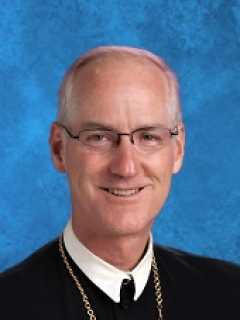Blessed János Brenner was celebrated by his American brothers, and his blood brother, a diocesan priest.
Lenten Campaign 2025
This content is free of charge, as are all our articles.
Support us with a donation that is tax-deductible and enable us to continue to reach millions of readers.
Fr. János Brenner (1931-57), a Hungarian Cistercian priest and martyr, was beatified at a ceremony in Hungary on May 1. In the aftermath of the 1956 uprising against the Soviet-backed communist Hungarian government, Fr. Brenner was called to give Holy Communion and last rites to a man near death. It was a ruse; Father’s body was found in the forest the following morning, dead of 32 stab wounds.
Hungarian Cardinal Péter Erdõ told the 20,000 gathered for the beatification that Fr. Brenner was a martyr for the Eucharist whose “main crime was that he was loved by both the young and the old.”
While some Catholic priests remained in Hungary in the 1950s and endured the persecution that led to the death of Fr. Brenner, others fled the country and established communities in other parts of the world that have since flourished.
One such community is the Cistercian Abbey of Our Lady of Dallas in Irving, Texas. While five of its members are elderly Hungarians of Fr. Brenner’s era, 22 others are younger Americans who have joined to continue their work.

Fr. Peter Verhalen, abbot of Our Lady of Dallas, traveled to Hungary with two of the elderly Hungarians in his community to participate in the beatification.
Aleteia spoke with him.
How many in the Cistercian community attended the beatification?
There were 40 to 50 from Hungary, Austria and Germany. Our abbot general came from Spain. There were also lots of abbots and bishops.
The Mass was in Latin, and Cardinal Erdo’s homily was in Hungarian. I’m an American born in Texas, so I don’t speak Hungarian. But Fr. Bernard, one of our Hungarian monks who came with me, shared with me the highlights.
Why did you want to go?
Fr. Brenner was a member of our congregation who has a beautiful story. He’s a role model for us; I keep a picture of him in my office. He was a young man living in terrible circumstances, but like many other Cistercians who remained in the country, maintained a joy in life. So, I went in support of our Hungarian Cistercians, and because of my devotion to Fr. Brenner.
In addition to joy, what other virtues do you think Fr. Brenner demonstrated?
He was effective in working with the young. He was courageous, and persevered in his ministry as a priest during dark days. The night of his death, someone told him his uncle was dying, go he got up and went to minister to him even though it was dangerous.
Fr. Brenner was aware of the communist government’s desire to be rid of him. His bishop was ready to transfer him to a safer location, but he said, “No, I’m happy here.” He chose to live in those circumstances.
The communist government was hostile to the Church in the 1950s, but things today have greatly improved, correct?
Yes. The country is thriving. Its prime minister, Viktor Orbán, is very favorable to Christians and the Catholic Church.
Do you have any special memories of the beatification?
One of the most impressive was when Fr. John’s brother, Fr. Joseph Brenner, who is a diocesan priest in his 80s, placed his brother’s relics in a reliquary next to the altar. So, you had the altar, where the sacrifice of Christ was about to be made present, next to the bones of a man who had sacrificed his life for Christ.
Later, Fr. Joseph, who was one of the main concelebrants, inserted the name of his brother into the canon of the Mass. You could tell Fr. Joseph was moved; his voice was quivering.
How is the Abbey of Our Lady of Dallas is continuing the work of Fr. Brenner and the Hungarian Cistercians today?
We were founded by Hungarian Cistercians in the 1950s. We keep a full monastic schedule, and wear the traditional Cistercian habit, a white tunic with a black scapular. Our principal work is teaching at a prep school for boys grades 5-12. We also teach at the University of Dallas, and help out in local parishes.
You’re doing well for vocations, with five men in formation and an average age of 37.
It is grace, and the fruit of the work of our previous abbot, Fr. Denis Farkasfalvy. Beginning in 2003, we had three guys come each of five years in a row. They were excellent young men, happy and healthy, and of the 15, 11 persevered to ordination. When young men discerning a vocation come to us, they see other young men in the community who are talented, athletic and pious, and they want to join. It’s been a snowball effect.
I myself began in the prep school in 1964, and was in the prep school for nine years. I entered the monastery after my sophomore year in college. I’ve been very grateful for my vocation. It’s been a beautiful life.








